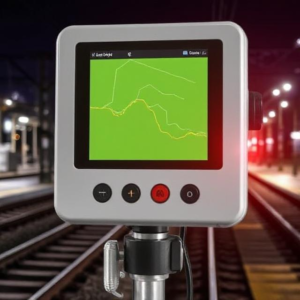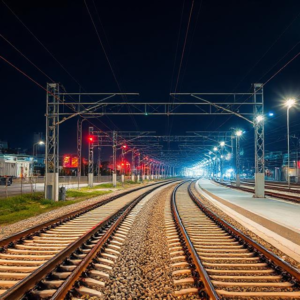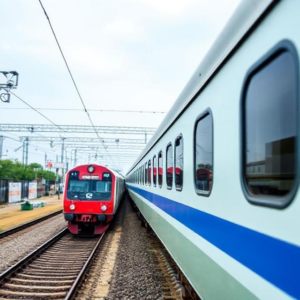What is Artificial Intelligence (AI)?
AI is like giving a computer or machine the ability to “think” and “learn” on its own, just like humans. In railways, AI helps improve operations, safety, and efficiency by making smart decisions based on data, without needing constant human input.

How AI is Used in Railways
- Predictive Maintenance
- What is it? AI can predict when parts of a train or the track are likely to need maintenance or repair.
- How it works: AI looks at tons of data collected from sensors on the trains and tracks (like vibrations, temperature, and wear). It can spot patterns and alert maintenance crews before something breaks down.
- Why it’s important: This helps prevent accidents or breakdowns by fixing things before they become big problems. It also saves money by doing repairs only when necessary.
- Train Scheduling and Traffic Management
- What is it? AI helps schedule trains in a way that maximizes the use of tracks, prevents delays, and ensures trains move smoothly.
- How it works: AI looks at real-time data (like train locations, speed, and track availability) and calculates the best way to move trains. It can adjust schedules automatically to avoid bottlenecks, delays, or overcrowding.
- Why it’s important: This leads to smoother, faster, and more efficient train services.
- Automated Trains (Driverless Trains)
- What is it? Some trains are equipped with AI that allows them to run without human drivers, using sensors and cameras to “see” and “understand” their environment.
- How it works: AI systems in automated trains can control the train’s speed, stop at stations, and navigate safely, just like a human driver would.
- Why it’s important: This can reduce human error, increase efficiency, and lower costs over time.
- AI in Ticketing and Customer Service
- What is it? AI helps with ticket booking systems, customer inquiries, and real-time updates.
- How it works: AI can analyze patterns in customer behavior to offer better services, like personalized travel recommendations or predicting when trains are busiest. Chatbots (automated systems) can also answer passenger questions instantly.
- Why it’s important: This makes the customer experience easier, faster, and more efficient, while also improving ticket sales and service offerings.
- Train Monitoring and Safety
- What is it? AI helps monitor trains for safety, including detecting dangerous conditions or behavior.
- How it works: AI-powered cameras and sensors on trains can watch out for obstacles on the tracks, monitor passenger behavior, and even detect problems like smoke or fire.
- Why it’s important: This increases safety by catching potential dangers early and reducing the risk of accidents.
- Energy Efficiency
- What is it? AI can make trains more energy-efficient by managing power use smartly.
- How it works: AI systems can monitor the train’s energy consumption in real-time and adjust things like speed or braking to save energy while maintaining performance.
- Why it’s important: This reduces the environmental impact of railways and can lower operating costs.
- AI for Smart Infrastructure
- What is it? AI can be used to optimize the infrastructure of railways, like signals, switches, and tracks.
- How it works: AI analyzes data from various sensors on tracks and stations to improve things like signal timing or track maintenance schedules.
- Why it’s important: This helps prevent delays, increases safety, and ensures the track infrastructure is in good condition.
Benefits of AI in Railways
- Improved Safety: AI can detect potential risks and prevent accidents before they happen.
- Cost Savings: Predicting maintenance needs and reducing the reliance on human workers for routine tasks saves money.
- Better Customer Experience: AI makes it easier for passengers to get information, book tickets, and receive updates.
- Efficiency: AI helps keep trains running smoothly, reducing delays and improving schedules.
- Sustainability: AI helps make trains more energy-efficient, reducing the carbon footprint of rail travel.
Examples of AI in Action:
- Automated Train Systems: Some metro systems (like in certain cities in Europe and Asia) already have driverless trains powered by AI that can operate safely without human intervention.
- AI-Powered Maintenance: Railways in places like the UK and Japan use AI to predict when track repairs are needed based on real-time data from sensors on trains.
- Customer Support: AI chatbots in some railways answer passenger questions about train schedules, ticketing, and delays without needing a human.
Conclusion:
In short, AI is transforming railways by making them smarter, safer, more efficient, and more customer-friendly. From predictive maintenance to automated trains and smart ticketing systems, AI is helping railways operate more smoothly and effectively while improving safety and customer experience.
Keywords: Artificial Intelligence (AI), Railway











